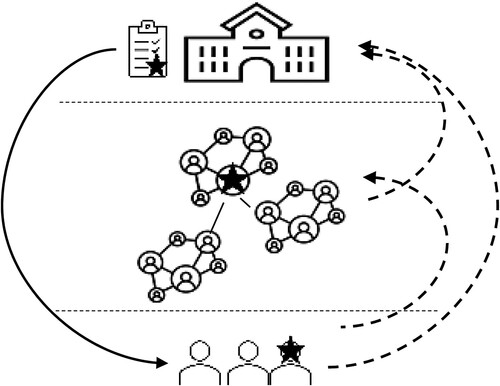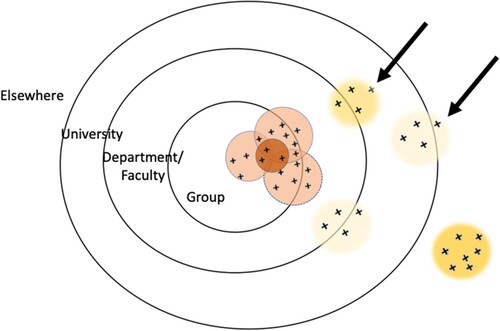Figures & data
Figure 1. The institution (macro level) introduces a teaching reward system (star) that target individual teachers (micro level) (solid arrows). These teachers are part of social networks (meso level). Reward systems that aim for a cultural change rely on the rewarded teachers to influence their colleagues through their networks (dotted arrows).

Table 1. Thematic map, experience of application process.
Table 2. Thematic map, perceived changes following reward.
Table 3. Thematic map, views on educational quality and reward systems.
Figure 2. Visualisation of a typical teaching and learning network. The network at the group- and department level was mainly made up of colleagues with whom the informants teach, share an interest, and/or colleagues that informants lead either formally or informally (e.g. leading course development). Among these colleagues, there was a small group of trusted individuals (significant network, dark circle). At the Faculty/University level, networks had a more formal and task-driven character (e.g. committees and working groups), or were more casual connections motivated by similar interests. Outside the institution, there was a research network where teaching and learning conversations also occur. Changes (black arrows) in networks after the reward happened most frequently outside group/department related to formal tasks or new roles.

